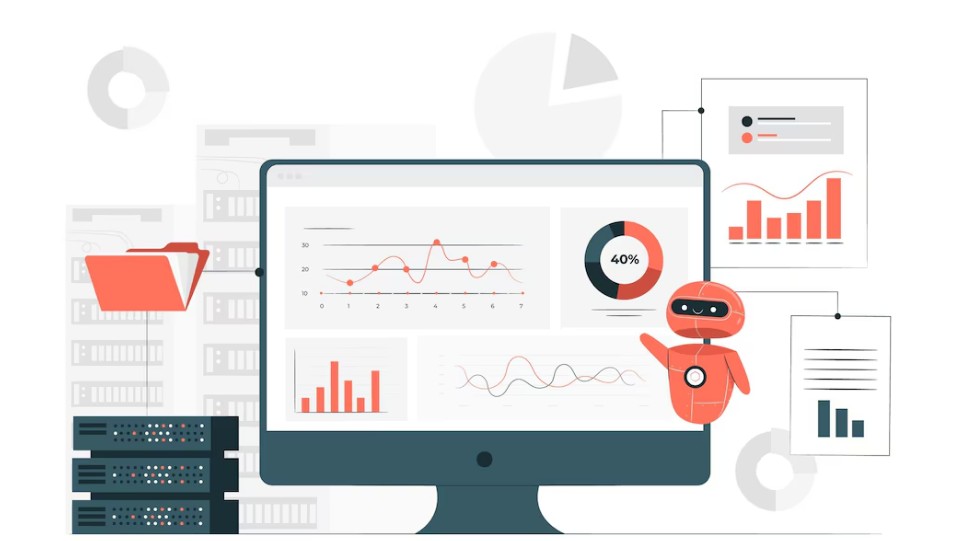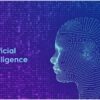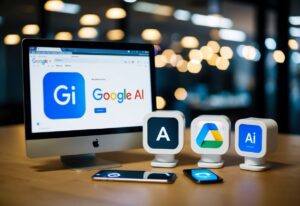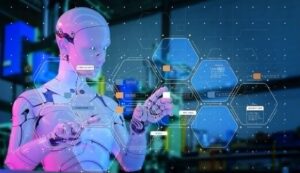AI statistics
AI statistics, facts and trends.
Artificial Intelligence (AI) is no longer a concept relegated to science fiction. It is now an integral part of various sectors.
From improving healthcare outcomes to driving personalised experiences in retail, AI’s scope continues to expand at a staggering rate. Understanding AI’s impact requires looking at the statistics, facts, and trends shaping the technology today and in the future.
This post will explore the latest AI statistics, compelling facts, and emerging trends that are driving AI forward, providing valuable insights into the current state of AI and its potential for the future.
AI Adoption: A Snapshot of the Current Landscape
Artificial Intelligence is becoming ubiquitous, with more industries adopting AI-driven solutions to optimise processes, improve efficiency, and enhance customer experiences.
To understand the global reach and the impact of AI, let’s take a look at some of the most telling statistics on AI adoption.
Global AI Market Statistics
The AI market is experiencing rapid growth, with significant investments and expansions in AI-related sectors. Here’s a look at some important market statistics:
Global Market Size: The AI market was valued at approximately $136.6 billion in 2023. Projections suggest the market will reach $1.8 trillion by 2030, growing at a compound annual growth rate (CAGR) of 38.1% over the next seven years.
Enterprise AI Adoption: According to McKinsey & Company source, around 58% of businesses globally are using AI in some capacity. This figure is expected to grow rapidly, especially as more businesses look to leverage AI’s capabilities to streamline operations, enhance decision-making, and gain competitive advantages.
AI Startups and Investment: Global investment in AI startups exceeded $80 billion in 2023, marking a significant rise in venture capital dedicated to AI technologies. The influx of investment in AI is accelerating innovation, with new AI applications and products being developed across industries at an unprecedented rate.
AI Adoption Across Key Industries

AI adoption varies significantly across industries, with some sectors embracing AI at a faster pace than others. Here’s a breakdown of AI’s impact across key industries:
Healthcare: AI is projected to save the healthcare industry more than $150 billion annually by 2026, thanks to improvements in diagnostic accuracy, personalised treatment plans, and operational efficiencies. AI-powered tools like IBM Watson Health source are already helping healthcare providers make better decisions and deliver more targeted care.
Financial Services: AI is expected to play a key role in the financial sector in the coming years. According to a report by Accenture source, 40% of AI adoption in the financial services sector will be achieved by 2025, with AI technologies being used in areas like fraud detection, predictive analytics, and risk management.
Retail and E-Commerce: The retail industry is undergoing a massive transformation with the help of AI. It is estimated that by 2025, 80% of all customer interactions in retail will be driven by AI, particularly through tools such as chatbots and recommendation systems. Platforms like Amazon source and Netflix source have revolutionised shopping and entertainment with their AI-based recommendation engines, providing hyper-personalised customer experiences.
Transportation: AI is expected to dramatically change the transportation industry by enabling autonomous vehicles and AI-based traffic management systems. It’s anticipated that AI will reduce global traffic fatalities by 25% by 2030, thanks to the increased adoption of self-driving cars, drones, and smart traffic systems.
Interesting AI Facts You Might Not Know
AI’s rapid rise and diverse applications are a fascinating story in themselves. Here are some compelling facts about AI that highlight its remarkable potential and growing presence in society:
1. AI Can Learn and Improve Over Time
One of the most remarkable features of AI is its ability to learn and adapt through machine learning (ML). Unlike traditional software, AI systems improve their performance by processing more data and adjusting their algorithms over time. For instance, Google’s DeepMind source has taught AI systems to play and master complex games like Go, surpassing human champions with strategic thinking and learning.
2. AI is Already Embedded in Daily Life
AI is not just an abstract concept; it is embedded in everyday life, often in ways we don’t realise. For example:
Virtual Assistants: AI-powered virtual assistants like Amazon Alexa source, Google Assistant source, and Siri source are increasingly popular, with over 3.25 billion digital assistants active globally as of 2023. They help users with tasks ranging from setting reminders to controlling smart devices.
Recommendation Systems: When you use platforms like YouTube source, Spotify source, or Netflix, AI-driven recommendation algorithms analyse your preferences and recommend content tailored to your tastes. These recommendation systems are now responsible for over 60% of the content people engage with on these platforms.
E-commerce: Online retailers use AI to deliver personalised shopping experiences by predicting what products customers are likely to buy based on past behaviour, leading to higher conversion rates and sales.
3. AI is Transforming Healthcare
In healthcare, AI is being leveraged to solve complex problems and improve patient care. AI has already made a huge impact in diagnostic fields:
AI in Diagnostics: AI systems can now detect certain diseases, such as cancer, with greater accuracy than human doctors. For instance, Google Health’s AI source has outperformed radiologists in identifying breast cancer from mammograms, achieving an accuracy rate of 89%—a significant leap from human capabilities.
Drug Discovery: AI is also accelerating the drug discovery process by predicting how different compounds will interact with biological systems. Atomwise source, for example, uses AI to predict the effectiveness of drugs in treating diseases like Ebola and Malaria.
4. AI Can Be More Energy Efficient Than Humans
In some scenarios, AI systems can be far more energy-efficient than humans performing similar tasks. For instance, AI algorithms can sift through vast datasets to identify patterns far quicker and with less energy expenditure than humans. This is crucial as data volumes continue to soar, and industries look for ways to handle massive amounts of information while reducing their environmental footprint.
AI Trends to Watch in the Coming Years
AI is constantly evolving, and there are several key trends that are poised to reshape industries in the coming years. Let’s explore some of the most important AI trends to watch:
1. AI-Driven Automation
One of the most exciting and disruptive trends is the rise of AI-driven automation. From factories to farms, AI is automating processes traditionally carried out by humans, dramatically improving efficiency and reducing costs.
In fact, automation through AI could replace up to 70 million jobs in the U.S. by 2030. However, AI is also expected to create new job categories, particularly in fields like AI programming, data analysis, and AI ethics.
Industries such as manufacturing source and logistics source are already using AI-powered robots to assemble products, pack items, and even manage inventory. For example, Amazon’s warehouse robots source can autonomously transport goods across vast distances within warehouses, improving operational speed and accuracy.
2. Generative AI
The rise of Generative AI is another trend that is rapidly gaining attention. Generative AI is capable of creating content from scratch, including text, images, music, and even video. Tools like GPT-4 (for text generation) source, DALL-E (for image generation) source, and Runway (for video creation) source are examples of AI models that can generate highly creative and realistic content.
Creative Industries: In fields like advertising, content creation, and media, generative AI is enabling designers, writers, and musicians to produce new ideas and artwork faster than ever before. For instance, AI-generated art source has become a mainstream tool for creating original artwork, with platforms like Artbreeder allowing users to generate unique images by blending different styles.
Healthcare: In the field of healthcare, generative AI models are also being used to create synthetic data for drug discovery and personalised treatment plans.
3. AI in Cybersecurity
AI is becoming an essential tool in the fight against cybercrime. As cyber threats continue to evolve, AI-powered systems are being deployed to detect, prevent, and respond to attacks in real-time. AI in cybersecurity can identify unusual patterns in large datasets, detect potential breaches, and even predict future threats based on historical data.
Darktrace source, a leading AI cybersecurity company, uses machine learning to detect cyber-attacks by recognising the patterns of normal behaviour in a network and alerting teams when anomalous activities occur. This proactive approach is enabling businesses to stay one step ahead of hackers.
Conclusion
Whether it’s improving healthcare outcomes, transforming the financial sector, or driving automation in manufacturing, AI’s impact is undeniable and continues to expand across industries.
Looking ahead, AI-powered technologies will continue to evolve, enabling new innovations and creating opportunities for businesses and individuals alike.



















